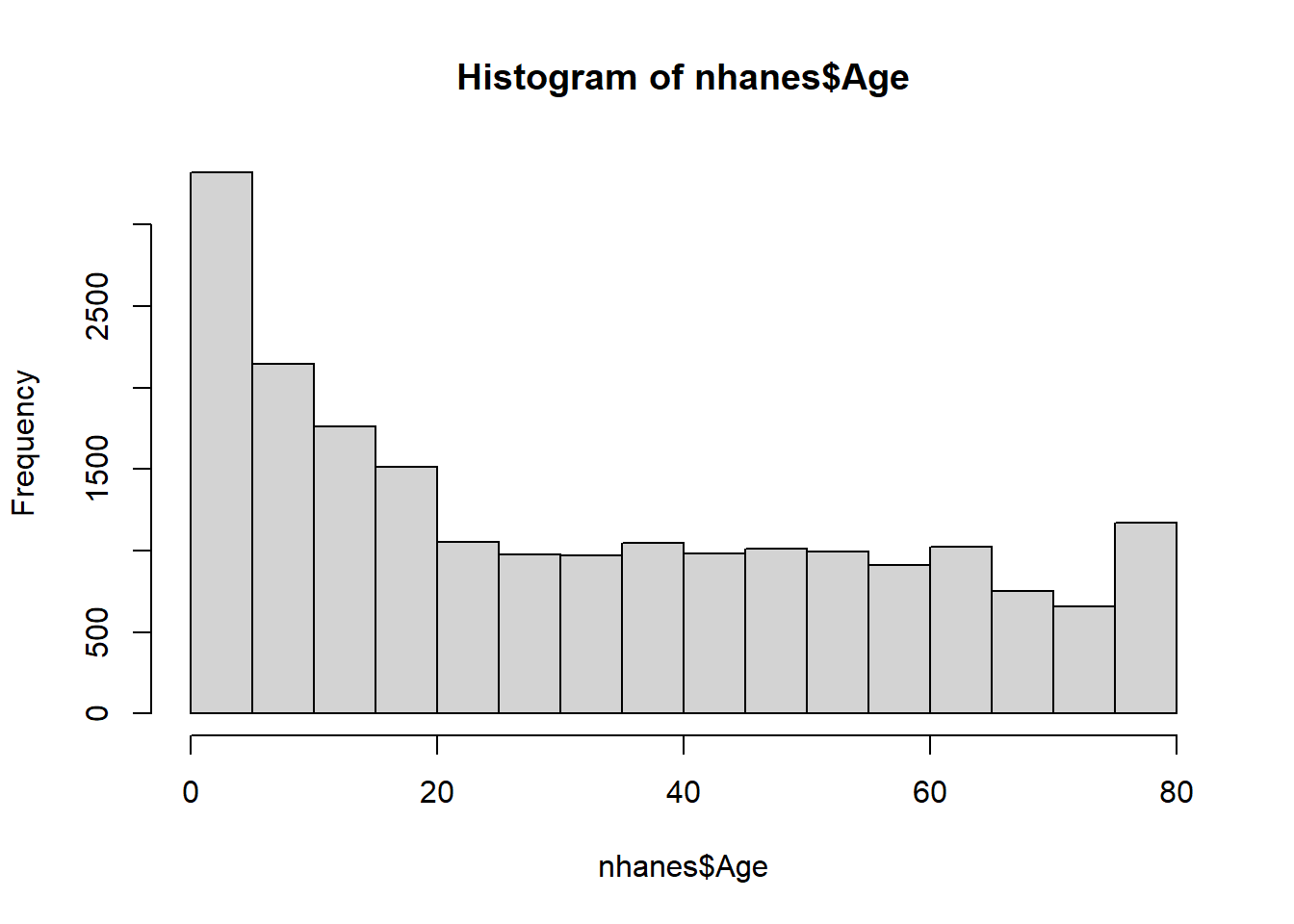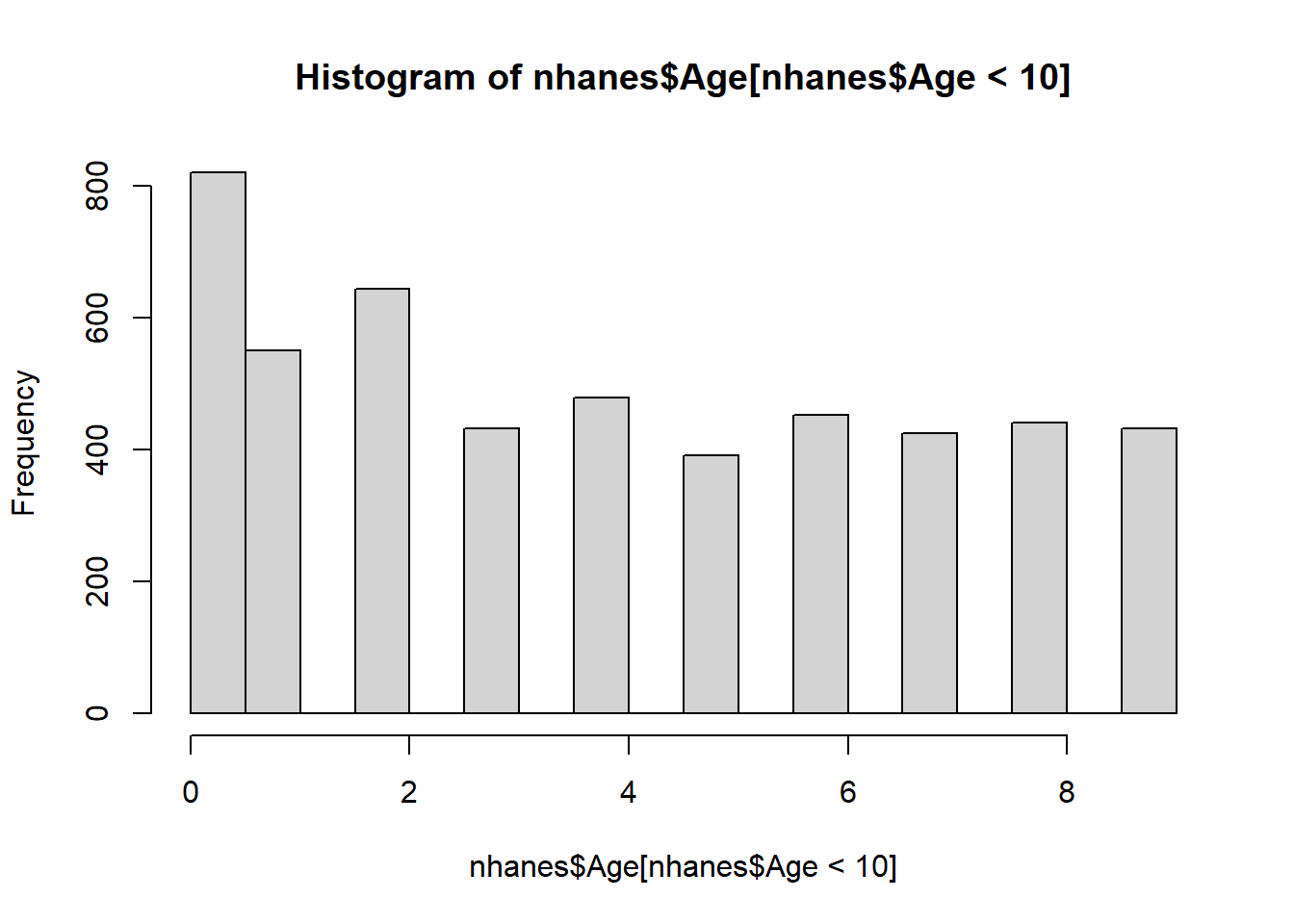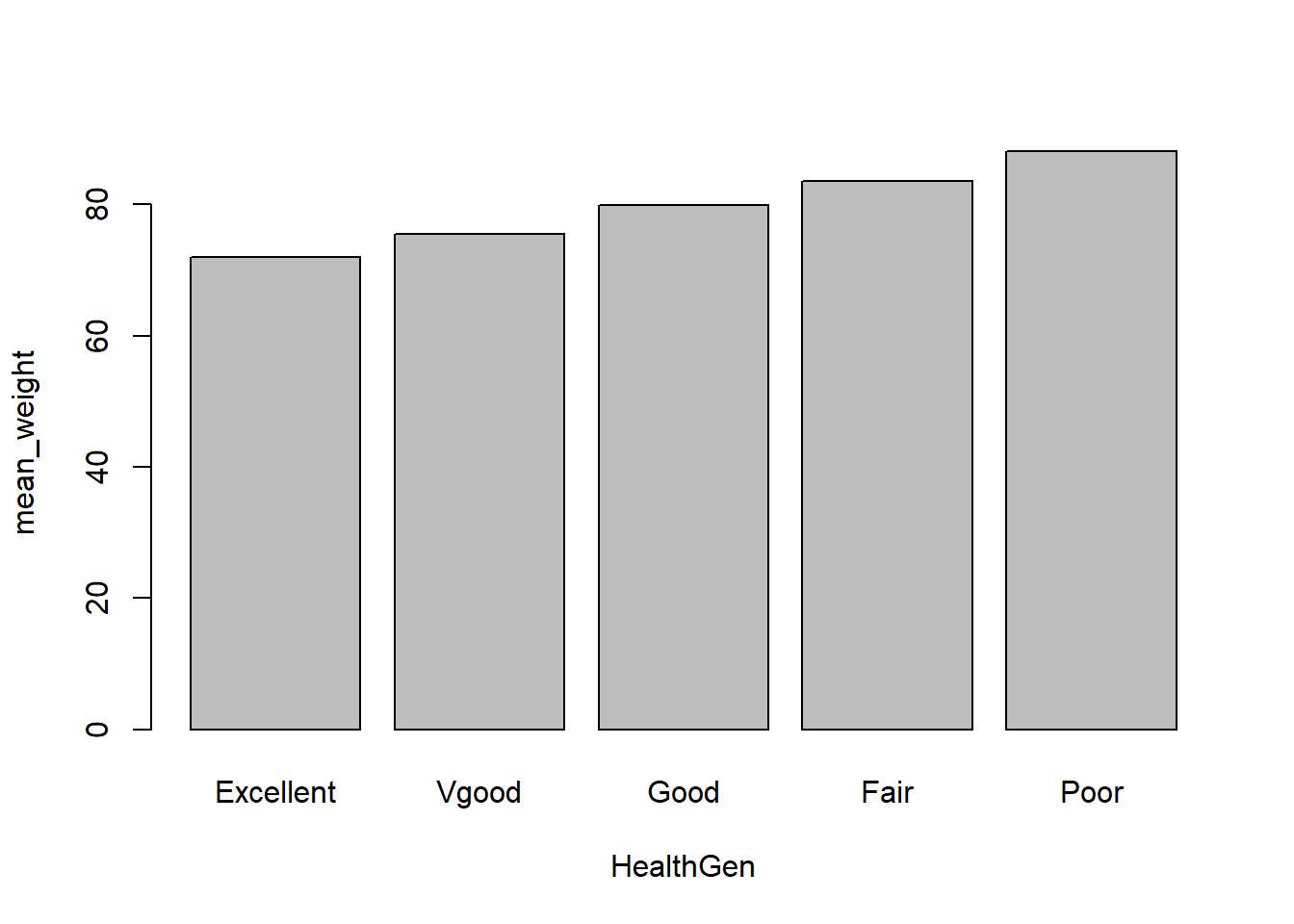Chapter 7 Plotting basic charts (base R)
It is important to distinguish between exploratory graphs and explanatory graphs: * Exploratory is done as part of analysis and there is no need to be pretty * Explanatory graphs are done once we understand the data and want to get insights across (for sharing with others)
7.1 histograms - basic frequencies



7.2 bar charts - plotting stats across categories
# Great for plotting a statistic (e.g. mean value) for categorical data
# Get dataframe into right format
aggregates_by_health <- nhanes %>% dplyr::group_by(HealthGen) %>%
dplyr::summarise(count = n(),
mean_weight = round(mean(Weight, na.rm=T),1),
mean_age = round(mean(Age, na.rm=T),1))
# create bar plot to plot either Frequencies or aggregate statistics
# Participant numbers by race
barplot(count ~ HealthGen, data = aggregates_by_health)

7.3 Box plots - plotting distribution of several categories/vars
# Good for distribution of continuous data across categories
boxplot(nhanes$Age ~ HealthGen, data = nhanes )
7.4 Scatter plots - relationship between two continuous vars
# Let's keep only adults in for this
adults <- nhanes %>% dplyr::filter(Age >= 18)
# plot scatter plot
plot(x = adults$Height, y = adults$Weight)
Can you guess the Correlation coefficient? What’s the value of the correlation coefficient?"
## [1] 0.434507Now let’s add the line of best fit. First, we calculate slope and intercept of line of best fit
## (Intercept) Height
## -72.209450 0.915329Then we can add them to the plot
# add them to plot (run both commands)
plot(x = adults$Height, y = adults$Weight)
# intercept and slope
abline(-72.209450 , 0.915329)
7.5 Tiny statistics excursion
What’s the relationship between the linear model regression coefficient and the correlation coefficient?
hnorm <- adults$Height/sd(adults$Height, na.rm = TRUE)
wnorm <- adults$Weight/sd(adults$Weight, na.rm = TRUE)
df_norm <- as.data.frame(cbind(hnorm,wnorm))
coef(lm(hnorm ~ wnorm, data = df_norm)) ## (Intercept) wnorm
## 14.7794973 0.4345723Note: For correlation coef, the larger the value, the stronger the (linear!) relationship. For regression coefficients, a larger slope coefficient does NOT imply that the association between variables is stronger (remember the unit dependency).